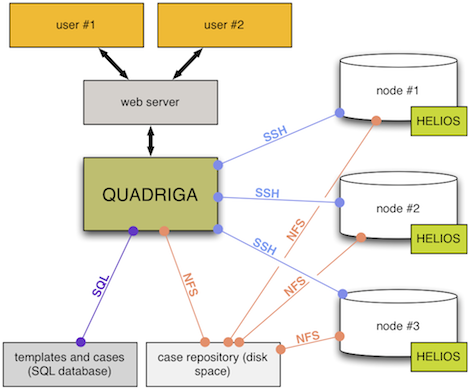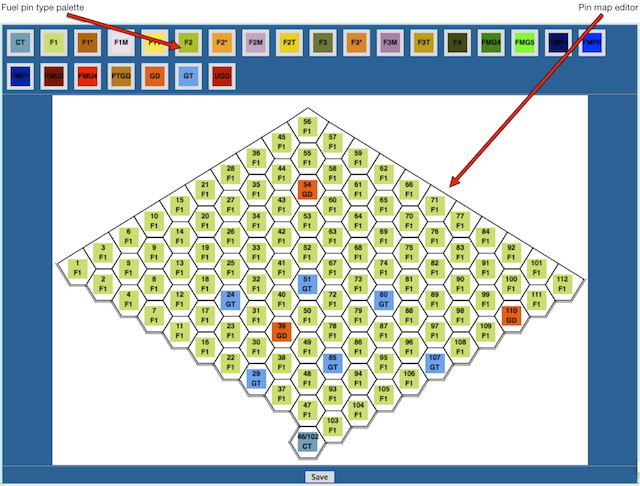
QUADRIGA is a visual tool for data preparation using the HELIOS (Studsvik Scandpower) code. Graphical user interface allows effortless generation of input decks, their automated execution and postprocessing. Most of the steps of - otherwise very laborous and and cumbersome - process of library generation is fully automated; since QUADRIGA is a network application, it can be easily integrated with a computer cluster and it allows easy sharing of data within the workgroup.
Generation of HELIOS input decks
The most important component of QUADRIGA is a system of input deck sets, which are enriched by special markup. They are used to specify highly generic template of HELIOS input decks and definition of interactive forms for parameter input (operation parameters, assembly zoning, fuel enrichment, burnup points). After the templates are built (which is done only once for large, geometrically similar family of fuel designs), data libraries using QUADRIGA can be prepared by users without HELIOS knowledge; all usually changing parameters are input via the graphical interface.
QUADRIGA is a network application
QUADRIGA is implemented as a network application, which features several advantages:
- distributed calculations – HELIOS calculation jobs are automatically distributed onto a computer cluster; QUADRIGA features a processing queue and a load balancer, which guarantees effective distribution of the computing load and maximizes utilization of the available workpower
- data sharing – most of the data (either the input deck templates or the calculation results) need to be shared among several users; QUADRIGA architecture allows that inherently. Access control framework is also implemented.
- centralized maintenance – since QUADRIGA is installed only on one computer, software deployment and maintenance costs are highly reduced
- high availability – QUADRIGA is available through a web server from any computer on the network or in the Internet
The following figure describes the network architecture of QUADRIGA:

Fuel assembly design
Graphical point-and-click interface features effortless design of new fuel assembly types. Data preparation for new fuel type is then reduced to zoning and enrichment specification – other tasks (input deck preparation, HELIOS execution, result postprocessing, data library creation) are automated.


